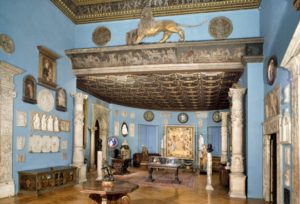

If you have already visited Rome, Florence, Venice and maybe Lake Como, as well as the Cinque Terre and the Amalfi Coast, and if you might be thinking you have now seen everything worth visiting in Italy… think again! There is no region, no city or even no small village in the country that will not surprise you with its history, art and natural beauty. Actually, these are the places (the Hidden Treasures?) that are more likely to provide the kind of experience that most of our clients describe as their “dream” when we talk about their desired itineraries: to feel like residents, to know the people, to be part of daily life… in other words, to stay away from the usual touristy spots.
Such a list is endless, but since we need to start somewhere, let’s start with Puglia (or Apulia, as it is called in English), and with one of its most fascinating coastal villages, Polignano a Mare.
The origins of Polignano would seem to date back to the fourth century BC, but for sure some remains of the original Roman roads can still be seen descending the steps next to the bridge, leading to a small and beautiful pebbled beach, once the ancient port. From here, it is almost incredible to see how the ancient inhabitants built their city overlooking the sea. The historic center was protected by a large wall, restored in the 16th century, with a long stretch of the remains still visible near Piazza Garibaldi, as it was the ancient watchtower by the sea.
In Piazzetta Miani stands the monumental and soberly elegant Palazzo Marchesale (the Marquis Palace), dating back to 400 AD. The city’s cathedral and the medieval Palazzo dell’Orologio (the Town Hall) are both found in Piazza Vittorio Emanuele II.
But if you are a sea lover, or you are a diver, don’t miss Cala Incina Tower, a virtual natural pool in the open waters where a marble statue of the Madonna was placed 14 meters below the surface. Or, take a boat trip to the natural sea caves created by the erosive action of waters creating a unique play of colors and light. Once you reach the most popular cave – the Palazzese Grotto (or Palatial Cave) – you can even take a break and lunch at one of the small authentic seaside restaurants in the area, all providing breathtaking views.
In addition, Polignano is also a perfect base for exploring the general area, to visit Alberobello (the Trulli District), the Castellana Caves, Monopoli, Martinafranca, the city of Bari and even Matera, the UNESCO World Heritage Site, home of the famous “Sassi” where Mel Gibson filmed his movie “The Passion of Christ”.
And since one of our most appreciated services is to always look for and recommend unique accommodations for our clients, you could treat yourself and stay at the beautiful Covo dei Saraceni. This Hotel stands on a spectacular stretch of coast on a cliff edge over the cobalt blue sea, with the enchanting Cala Paura small beach at just 200 meters, and the historic centre of Polignano, with its whitewashed houses and lovely little shops just a very short walk away. The rooms are very comfortable and are furnished in the typical local style, with wrought iron beds, colored ceramic floors and white and blue mosaics in the bathrooms; the four suites have a large terrace with a spectacular view of the sea and of Polignano itself. Needless to say, the hotel’s panoramic terrace is a special place where you can relax in the evening and enjoy the flavors of one of the most inviting regional cuisines in all of Italy.

Hotel Covo dei Saraceni

Terrace with a view

A room at Covo dei Saraceni

The flavors of Puglia





 ding that authentic jewel of Pitigliano – or on the other hand, places where the food is wonderful and the wines even better; let us disregard the obvious tourist guide mentions – the hot springs, the Etruscan ruins, the wineries producing Morellino, one of the most interesting red wines of the area; let us also avoid talking about the sea and the sandy beaches bordered with fragrant Mediterranean maquis, a triumph of oleanders and cypress trees, wild rosemary and tamarisk. Instead, let us talk about the mad genius, the unexpected creation that awaits you beyond that next hill, among olive trees and olive groves.
ding that authentic jewel of Pitigliano – or on the other hand, places where the food is wonderful and the wines even better; let us disregard the obvious tourist guide mentions – the hot springs, the Etruscan ruins, the wineries producing Morellino, one of the most interesting red wines of the area; let us also avoid talking about the sea and the sandy beaches bordered with fragrant Mediterranean maquis, a triumph of oleanders and cypress trees, wild rosemary and tamarisk. Instead, let us talk about the mad genius, the unexpected creation that awaits you beyond that next hill, among olive trees and olive groves.





